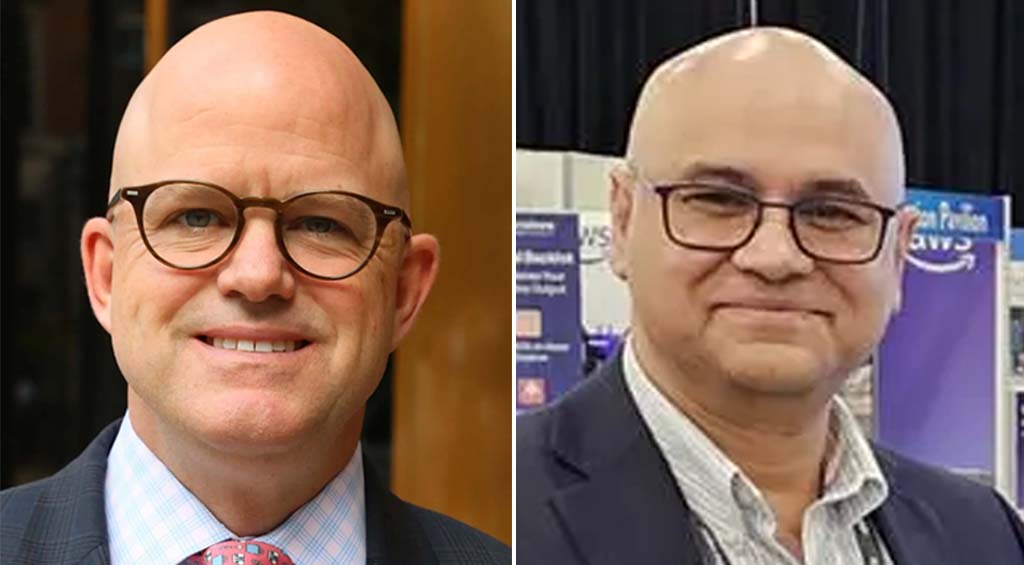Good Times Return to Glitter Gulch
NAB2004 sparks optimism after some tough years
LAS VEGAS
It's a good sign for business when company executives are too busy to talk to a reporter. Traffic on the show floor at NAB2004 was such that a few executives had to apologize and excuse themselves in the midst of a hard-won booth visit, because potential paying customers beckoned.
Jackson Kitahara and Hiro Tanoue of For-A were in constant demand on opening day, as a steady stream of people moved through their booth asking questions about For-A's products. In between directing traffic and explaining technology, Tanoue noted two trends in For-A products that were reflected across the floor-people want more functionality in a smaller space.
"The number one thinking is compact," Tanoue said.
To that end, there were tiny HD cameras on the floor, pocket- and pen-sized signal monitors, scaled-down coaxial cable, diminutive audio mixers, miniature camera lights, hard drives and even master controllers.
Perhaps nowhere was the effort to squeeze more stuff into less space more evident than in the category of codecs.
More than anything an FCCchairman may proclaim, the attention given codecs at this year's NAB show is a definitive milepost in the DTV transition. First of all, when folks are blithely tossing off the term "codec" and uttering nary a "wave," certainly the top of the transition bell curve is near. Second, by the very nature of what codecs do, it suggests that demand for hi-def material is expected to take off.
HD EXPECTATIONS
Apple signaled its expectation by adding Panasonic's HD codec to its Final Cut Pro HD editing software. Avid also weighed in with DNxHD, a variable codec designed for the editing process that reduces the storage capacity necessary for HD material.
At least two companies, Modulus Video and Envivio showed gear with AVC, the next-generation MPEG codec that's said to be twice as efficient as MPEG-2. QuVis brought its ASIC Digital Mastering Codec, designed to support ATSC-quality HD video at 5-10 Mbps. Broadcast International heralded CodecSys, a video distribution management system that instantly switches to the most efficient codec, reducing HD transfer data rates to as low as 3 Mbps.
Anticipation of a hotter market for hi-def gear was also apparent in cameras, where lipstick cams, long-range lenses, and super slow-motion models were all introduced in HD versions.
Elsewhere, there were HD radio transmitters, HD mobile encoders, HD delay gear and of course, the KUSA-TV HD chopper at the MRC booth.
For all the indications that the peak of the digital transition is near, there are as many indications that analog technology is not going gently into that good night. Chyron introduced an upconverter to make HD graphics out of SD files, which are still easier and quicker to manipulate. Broadcast Pix added analog capability into its self-contained production systems. Also, many switcher dealers on the floor showed units with interchangeable HD and SD matrix boards, allowing customers to buy a chassis that can be upgraded as the need arises. The lingering presence of analog was also quite pronounced among the companies making transmitters, which still exclusively provide signals to anywhere from 20 million to 80 million television sets.
A GOOD TIME HAD
One observation made by many on the show floor was that attendance, particularly by the international contingent, was up over last year, when the show coincided with the launch of the war in Iraq and the SARS outbreak. This year, with world events being comparatively orderly, attendance increased by nearly 10 percent over last year to around 98,000.
Feedback from exhibitors was predominately positive. Michael Wellesley-Wesley, president and CEO of Chyron in Melville, N.Y. said it was the best show for his company in several years. Pete Challinger, vice president of Quartz Electronics in Nevada City, Calif. came away with a stash of product-development information.
"The show went really well for us with strong positive reactions to the new products," Challinger said. "We got more ideas for signal processing technology modules than we can handle right now. Everyone had something they'd like and many were good ideas."
Pesa also generated its share of suggestions with its photonic switcher demonstration.
"I'm hearing more and more about requirements for this product, and the overall direction in the industry," said Bob McAlpine, senior vice president, sales & marketing Pesa, also in Melville.
Joe Turbolski, director of marketing for Thales in Southwick, Mass., reported that his company "had all the right prospects visit our booth."
As anyone who goes to the NAB show knows, it involves far more than spending a few days in the Las Vegas Convention Center, dreaming of a foot massage. In a way, the fat lady never sings. The event is a year-round affair that generates sales, new technology and new demands to the point that vendors can never rest, as the president of Panasonic Broadcast TV Systems in Secausus, N.J., John Baisley can attest.
"From my perspective, the show went very well," Baisley said. "But, ultimately it is the customer who will decide how successful the show was for Panasonic."
The professional video industry's #1 source for news, trends and product and tech information. Sign up below.
